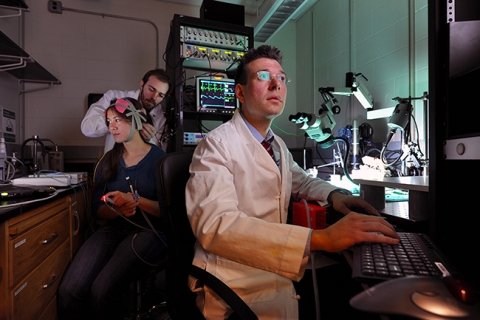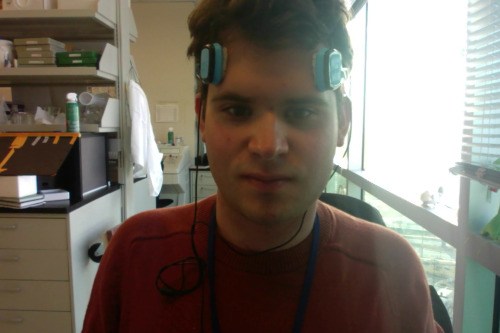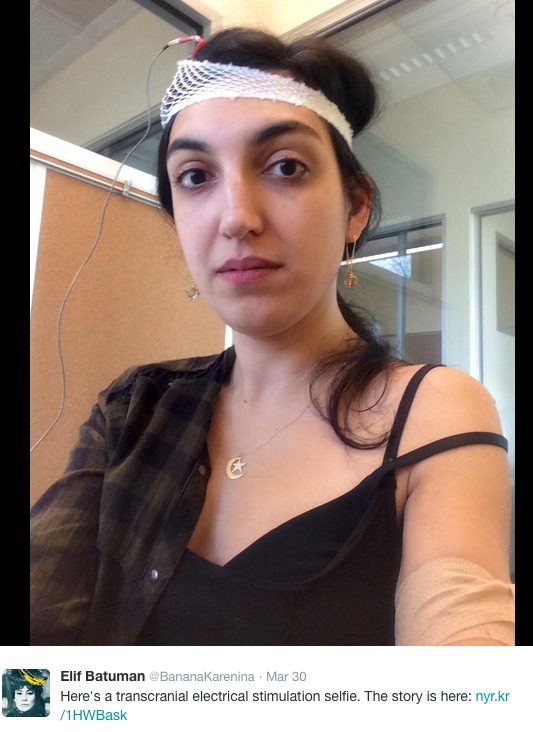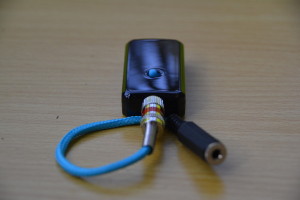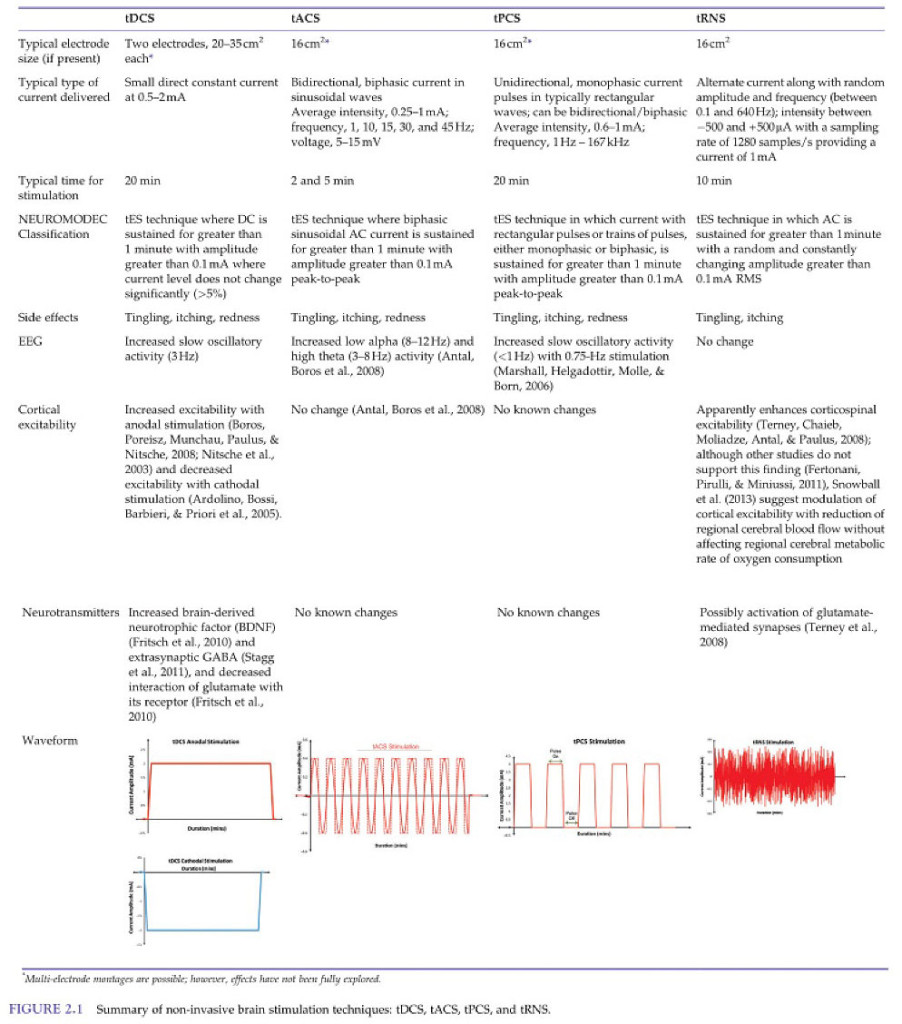Sounds like some kind of tACS. Will try to follow-up with more info.
See Also: Your Brain on Electricity
For the Cortex study, Frohlich’s team enrolled 20 healthy adults. Researchers placed electrodes on each side of each participant’s frontal scalp and a third electrode toward the back of the scalp. This way, the 10-Hertz alpha oscillation stimulation for each side of the cortex would be in unison. This is a key difference in Frohlich’s method as compared to other brain stimulation techniques.
Each participant underwent two sessions. During one session, researchers used a 10-Hertz sham stimulation for just five minutes. Participants felt a little tingle at the start of the five minutes. For the next 25 minutes, each participant continued to take the Torrance Test of Creative Thinking, a comprehensive and commonly used test of creativity. In one task, each participant was shown a small fraction of an illustration – sometimes just a bent line on a piece of paper. Participants used the line to complete an illustration, and they wrote a title when they finished.
In the other session each participant underwent the same protocol, except they were stimulated at 10 Hertz for the entire 30 minutes while doing the Torrance test. The tingling sensation only occurred at the start of the stimulation, ensuring that each participant did not know which session was the control session.
Because rating creativity or scoring a test can involve subjectivity, Frohlich sent each participant’s work to the company that created the test. “We didn’t even tell the company what we were doing,” Frohlich said. “We just asked them to score the tests.
”Then Frohlich’s team compared each participant’s creativity score for each session. He found that during the 30-minute stimulation sessions, participants scored an average 7.4 percentage points higher than they did during the control sessions.
via Scientists Use Brain Stimulation to Boost Creativity.
link to paper: (paywall) http://www.sciencedirect.com/science/article/pii/S0010945215001033

